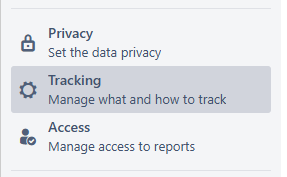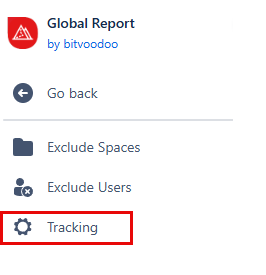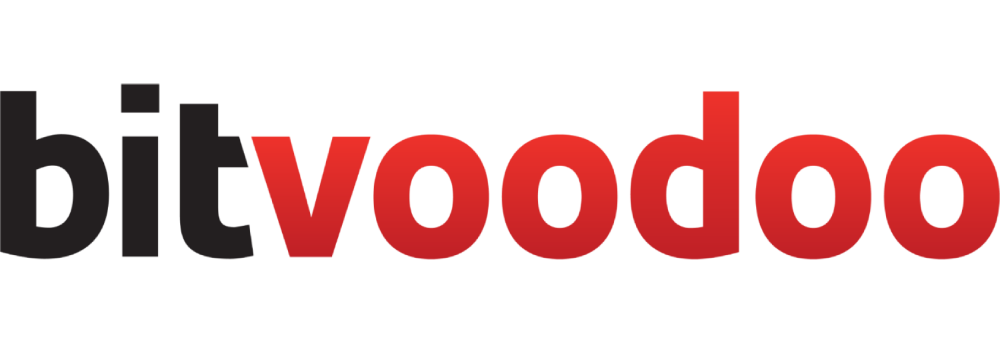Attachment Tracking Settings
Overview
As a Confluence Administrator, you can specify which file types to track—such as Microsoft Word, Excel, PowerPoint, PDFs, Gliffy diagrams, images, and more. This allows you to focus tracking on specific file types to keep Viewtracker reports clear and relevant.
Include or exclude file types
To access or adjust these settings, follow the steps below.
Locate and open Viewtracker's tracking settings (options may vary depending on your Confluence product) as shown here:
In Viewtracker for Confluence Data Center:
Go to the Analytics Cockpit and select Tracking to access the settings.

Entry for the Tracking settings in Confluence DC.
In Viewtracker for Confluence Cloud:
Go to Viewtracker - Global Report, select Manage Tracking and then Tracking.

Tracking settings in Confluence Cloud.
In the Attachment File Types field, you'll see a list of tracked file types.
Click on the dropdown to add or remove file types. Your changes will be saved automatically and the tracking will begin from that point.

Screenshot of the Attachment File Types field.
Note: Existing attachment views (collected before the settings were changed) will remain in the database and will not be deleted. They might show up in the report.
Available file types for tracking
Word
Document
Template
Document with Macro
Template with Macro
Excel
Sheets
CSV
Sheets with Macro
Template with Macro
Add-in with Macro
Binary sheet with macro
Spreadsheet
Spreadsheet with template
Powerpoint
Presentation
Slideshow
Template
Add-in with macro enabled
Presentation with macro
Template with macro
Slideshow with Macro
Images
GIF
PNG
TIF
TIFF
JPEG
BMP
SVG
WEBP
x-icon
Video
MPEG
MSvideo
Webm
MP4
Quicktime video
WMV
Project
Ms proj
MSproject
x-msproject
x-dos MS project
Archive
ZIP
GZIP
7ZIP
TAR
RAR
Audio
MP3
WAV
AAC
AIFF
DSD
ALAC
OGG
Other formats:
PDF
Gliffy
Calendar*
.ics(see note below)
Text documents (Cloud only)
Extensions:
TXT
RTF
Differences between file type tracking on Viewtracker on-premise and Cloud:
Data Center/Server: specific MIME types are tracked
Cloud: specific extensions are tracked
Notes:
For Calendar
.icsfiles, a bug during the upload of attachments can cause the file to be renamed in two ways.To prevent this, users must upload the file via the “upload attachment” method and not via drag and drop - CONFSERVER-101313 .
A workaround is to rename the
content typeattribute fromapplication/octet-streamtotext/calendar.
